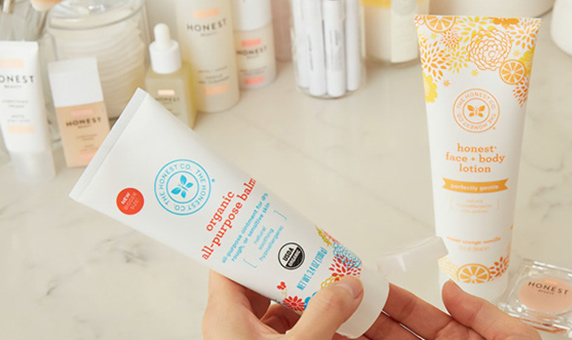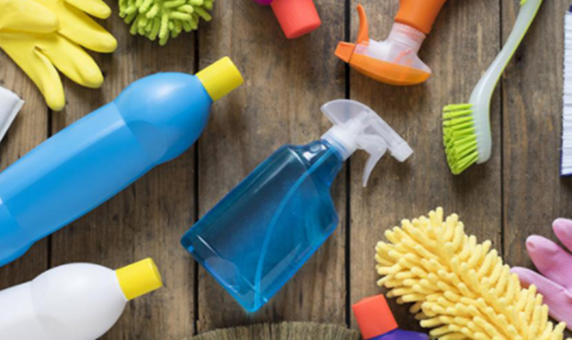Triclosanis a broad spectrum antimicrobial used as an antiseptic, disinfectant or preservative in clinical settings, various consumer products including cosmetics, household cleaning products, plastic materials, toys, paints, etc. It is also incorporated on the surface of medical devices, plastic materials, textiles, kitchen utensils, etc., from which it might slowly leach for a long period of time during their use, to perform its biocidal action.
How is triclosan used in cosmetics?
Triclosanwas listed in 1986 in the European Community Cosmetics Directive for use as a preservative in cosmetic products at concentrations up to 0.3%. The recent risk assessment performed by the EU Scientific Committee on Consumer Products concluded that, although its use at a maximum concentration of 0.3% in toothpastes, hand soaps, body soaps/shower gels and deodorant sticks was considered safe on a toxicological point of view in individual products, the magnitude of the aggregate exposure to triclosan from all cosmetic products is not safe.
Any additional use of triclosan in face powders and blemish concealers at this concentration was also considered safe, but the use of triclosan in other leave-on products (e.g. body lotions) and in mouthwashes was not considered safe for the consumer due to the resulting high exposures. Inhalation exposure to triclosan from spray products (e.g. deodorants) was not assessed.
Triclosan being non-ionic, it can be formulated in conventional dentifrices. However, it does not bind to the oral surfaces for more than a few hours, and therefore does not deliver a sustained level of anti-plaque activity. To increase uptake and retention of triclosan by oral surfaces for the improvement of plaque control and gingival health, triclosan/polyvinylmethyl ether maleic acid copolymer and triclosan/zinc citrate and triclosan/calcium carbonate dentifrice are used.

How is triclosan used in healthcare and medical devices?
Triclosanhas been effectively used clinically to eradicate micro-organisms such as methicillin-resistant Staphylococcus aureus (MRSA) , notably with the recommendation to use 2% triclosan bath. Triclosan is employed as surgical scrubs, and it is widely used in hand washing and as a body wash to eradicate MRSA from carriers prior to surgery .
Triclosan is used in a number of medical devices, for example ureteral stents , surgical sutures and might be considered to prevent graft infection . Bojar et al did not observe a difference in colonisation between triclosan-coated sutures and regular multifilament suture, although their work concerned five bacteria and is only based on the determination of the zone of inhibition.
In ureteral stents, triclosan has been shown to inhibit the growth of common bacterial uropathogens and to reduce the incidence of urinary-tract infections and, potentially, catheter encrustation have recently demonstrated synergistic effects of triclosan and relevant antibiotics on clinical isolates comprising seven uropathogenic species, and they support the use of the triclosan-eluting stent when necessary, along with standard antibiotic therapy in treating complicated patients.
In some further developments, the use of triclosan in urinary Foley catheter was suggested since triclosan successfully inhibited the growth of Proteus mirabilis and controlled encrustation and blockage of the catheter . Recently, Darouiche et al. demonstrated synergistic, broad-spectrum and durable antimicrobial activity of the catheters coated with a combination of triclosan and DispersinB, an anti-biofilm enzyme that inhibits and disperses biofilms .

How is triclosan used in other consumer products?
The broad-spectrum antimicrobial activity of triclosan has led to its incorporation in an extended range of product formulations intended for home use such as liquid soaps, detergents, chopping boards, children鈥檚 toys, carpets and food storage containers. A detailed list of consumer products containing triclosan is provided by the US Environmental Protection Agency (EPA) and by the US NGOs "Environmental Working Group" and "Beyond Pesticides" .
An increasing number of clothing articles are treated with biocides. Triclosan is one of the finishing agents for the production of such textiles .The fabrics finished with triclosan are treated with cross-linking agents to provide durable antibacterial properties. On the basis of the available information, 17 products from the Danish retail market were analysed for the content of some selected antibacterial compounds: triclosan, dichlorophen, Kathon 893, hexachlorophen, triclocarban and Kathon CG. Five of the products were found to contain 0.0007% – 0.0195% triclosan .
Aiello et al in the first systematic review assessing the benefit of soaps containing triclosan, evaluated 27 studies published between 1980 and 2006. One of the key findings is that soaps that contained less than 1% triclosan showed no benefit from non-antimicrobial soaps. Studies that used soap containing > 1% triclosan showed a significant reduction in bacterial levels on hand, often after multiple applications.
The apparent lack of relationship between the use of soap containing triclosan and reduction in infectious illness was difficult to ascertain in the absence of identification of the biological agents responsible for the illness symptoms. Two recent US studies demonstrated that hand washing with antimicrobial soap containing triclosan (0.46%) reduced bacterial load and transfer of bacteria from hands, compared to hand-washingwith a non-antimicrobial soap.
Spring Products
We produce a wide range of products that can be used in personal care and cosmetic industry,like skin care, hair care, oral care, cosmetics,household cleaning,detergent and laundry care,hospital and public institutional cleaning. Contact us now if you're looking for a reliable business partner.
Post time: Jun-10-2021

